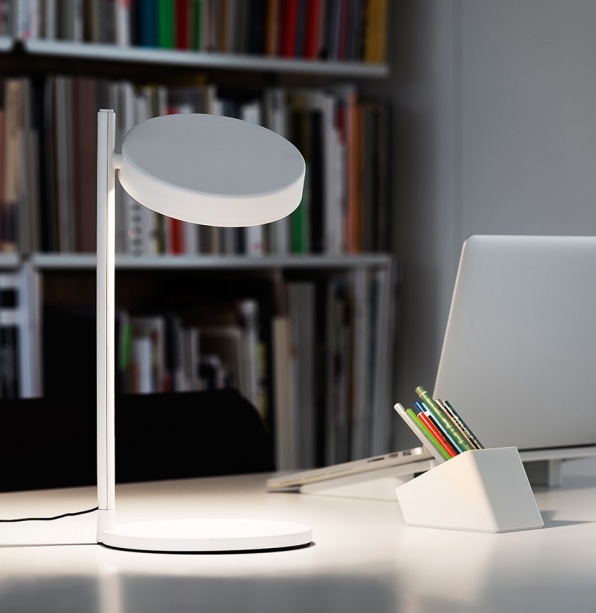[Photo: Gilbert McCarragher/courtesy Industrial Facility]
Many high-end lamps with thin elegant forms are made of metal. But a new lighting series from the London-based design studio Industrial Facility is composed of a bioplastic derived from castor oil.
The lamp, called Pastille, is simple by design: just a hand-sized circle suspended from a single post. Even its insides contain only the bare essentials, with a single LED hidden inside the round disk. A mirror and plastic diffuser help that single LED do the work of a full array, while making the lamp more energy efficient.
In fact, that same plastic diffuser is what inspired cofounder and partner at Industrial Facility Sam Hecht to wonder if the lamp’s cost could be even further reduced by making its body out of plastic, too. “The immediate reaction is: No one wants a plastic lamp,” he says.
But later, Hecht and Industrial Facility partner Kim Colin, who were designing the lamp for the Swedish brand Wastberg, came across a material the company had used before–a bioplastic composed of 60% recyclable material from the castor bean plant and reinforced with glass fiber. It fit the lamp’s ultra-simple-but-elegant bill: The inclusion of the glass fiber made the composite material heavier and sturdier than normal plastics, and gave it a sense of refinement. The Pastille certainly doesn’t look like it’s made out of plastic. Plus, making the bioplastic doesn’t compete with food production because castor beans grow wild.
There were other benefits to using plastic, too. Instead of needing to paint metal to achieve the desired look, the pigment is mixed into the plastic; no touch-ups are needed over time. “The other thing we discovered is that the bioplastic is helping us with dissipating heat–like metal,” Hecht says. “That meant we could reduce the heat sink, which is taking away the heat from the LED, which reduces weight and cost.”


